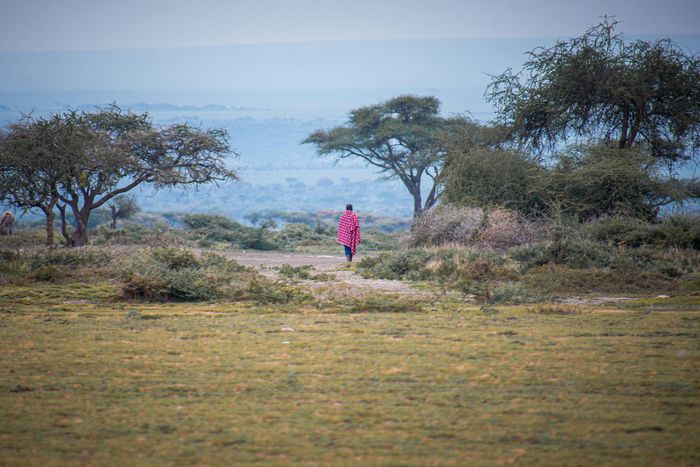by Lea Thin, freelance author
Kenya and Indonesia host unique ecosystems and tremendous biodiversity—from the Great Rift Valley in East Africa to the rainforests of Sumatra and Borneo. Successful biodiversity conservation in these countries has so far relied heavily on long-term development cooperation. Recent budget cuts by the U.S. development agency USAID now threaten key initiatives to protect wildlife, rainforests, and alternative incomes to illegal poaching for local communities. At the same time, tourism plays an important role in both countries—as a source of funding, an educational platform, and increasingly as a carrier of nature-based development strategies. But can tourism fill the gaps left by shrinking international funding?
Kenya and Indonesia: Conservation Amid Financial Crisis
International funding has been a crucial pillar for protecting biodiversity. Programs by the Masai Mara Wildlife Conservancies Association (MMWCA) in Kenya, for example, were until recently about 80% funded by USAID. The abrupt decision by the Trump administration to slash U.S. development cooperation funding has now destabilized the entire structure.
“The USAID cuts affect nearly every area—from community meetings and training sessions to environmental programs. Around 80% of our activities are impacted. Staff shortages are also emerging as employees look for alternative income sources. This already endangers biodiversity protection and the stability of the whole ecosystem,” says Emmanuel Etiamansi of MMWCA in Kenya.
The situation is similar in Indonesia. Rudi Putra, founder of the Leuser Conservation Forum, worries about the funding gap caused by USAID’s withdrawal: “Our work depends almost entirely on foreign funds. For 2025, we face a lack of about $250,000 funding —putting patrols against poaching, monitoring, and reforestation projects at risk.”
Tourism as an Economic Model for the Masai Mara
International funding from development agencies like USAID or Bread for the World not only enables direct species protection but also helps develop structures for greater financial independence of protected areas, such as implementing sustainable tourism concepts beyond purely market-driven models. When properly managed, tourism can make substantial contributions to biodiversity conservation. In Kenya, about 10% of GDP is generated by tourism. In 2024, around 2.5 million international visitors traveled to Kenya, most of them drawn by safaris and nature experiences. Well-developed safari offerings in national parks like the Masai Mara not only finance protected areas but also generate income for local communities, explains Emmanuel Etiamansi: “In the Masai Mara, we are planning several new concepts to diversify revenues in the long term—such as CO₂ certificates, sustainable livestock farming, or nature-based enterprises for women like beekeeping and sustainable cattle breeding to increase returns for landowners.” Lease payments to landowners help secure habitat for wildlife. If these incomes disappear—as they did during the COVID-19 pandemic—more than 150,000 hectares of protected land are at risk. Involving local people is essential: “Landowners are decision-makers. We always inform them thoroughly before introducing new models or partners. They decide what happens on their land and are involved directly through assemblies, seminars, and committees to shape tourism models, including controlled grazing to maintain ecological balance,” Etiamansi emphasizes.
Tourism in the Leuser Ecosystem: Great Potential, Missing Structures
Indonesia also benefits significantly from tourism, which contributes around 4.5% to GDP. On islands like Bali or in West Papua, eco-tourism projects demonstrate sustainable alternatives to poaching and deforestation. Rudi Putra sees great potential for the Leuser National Park with currently only about 4,000 visitors per year: “There could be a million visitors. This would benefit the local population through new jobs and by selling non-timber forest products such as honey, medicinal plants, rattan, and bamboo. Biodiversity would benefit, too, as dependence on illegal poaching and logging would decline.”
However, many foreign funds exclude investments in economically viable conservation models. “A lot of money goes to non-productive activities, while entrepreneurial approaches remain underfunded,” Putra says. Professionally managed tourism programs could finance protection measures and generate income, but infrastructure, marketing, and expert personnel are lacking. Another hurdle is accessibility: “Getting to the Leuser ecosystem is arduous, often only reachable by car after several days. To make sure visits don’t become week-long odysseys, targeted investments by the Indonesian government in roads, transport connections, and tourism infrastructure are needed,” Putra explains. He is clear: “Mass tourism would be the wrong path. Especially for endangered species like the Sumatran rhinoceros, protection must come first.” But a well-managed, environmentally friendly tourism model could be key to financing and securing the future of the protected area.
Tourism as Part of the Solution—Not a Substitute for Development Aid
International funding is not charity but an investment in the global common good of nature. Donor countries must understand and act strategically—especially amid growing climate and environmental crises. Every hectare of saved rainforest is also an active contribution to climate protection: up to 1,000 tons of CO₂ are stored per year—twice the annual emissions of an average EU citizen. At the same time, the market for CO₂ compensation through forest protection projects is expected to grow to over $50 billion by 2030, according to McKinsey—an opportunity that could make protected areas like the Masai Mara or Leuser National Park valuable long-term investments. Yet relying solely on market mechanisms ignores local realities: many Global South regions lack the infrastructure or institutional frameworks to economically leverage biodiversity. Without state support, conservation remains unprofitable.
Further, sustainable protection is only possible when ecological measures are linked to social rights and development perspectives. Nature is not just beautiful but vital for many local communities’ survival. Protecting biodiversity in countries like Kenya and Indonesia requires more than eco-lodges and travel brochures—it demands long-term strategies connecting conservation, social justice, and global responsibility. Tourism can help—but only if global responsibility and solidarity-based funding are part of the equation.




![[Translate to english:] Jepp fährt im Sonnenuntergang durch die Savanne](/fileadmin/tourismwatch/_processed_/0/8/csm_hu-chen-0LwfbRtQ-ac-unsplash_357f271485.jpg)
![[Translate to english:] Frau schaut durch ein Fernrohr in die Weite Woman looking through Telescope_Uganda](/fileadmin/tourismwatch/_processed_/b/1/csm_TW_103_Uganda_Slim_Emcee_-_Unsplash_0_06225e8801.jpg)